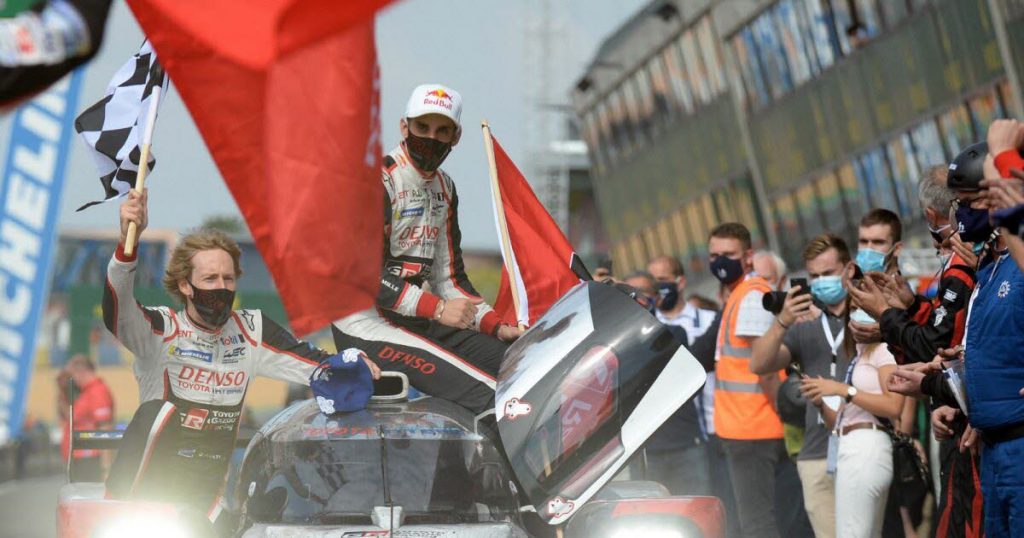
The arrival of the Hypercar and the return of the public
In order to accommodate 20% of the usual number of spectators, in the midst of the Covid-19 pandemic, the 89th edition of the 24 Hours of Le Mans (usually organized in mid-June) has been postponed to August. So it will start on Saturday at 4:00 pm (2:00 pm GMT), after the free training on Wednesday.
“Last year, we were in front of the camera and it was a real sadness,” organizer Pierre Fillon recalls. “Le Mans is a great race, but it is above all a great popular celebration. Without spectators, it was very difficult, even if it was absolutely necessary to organize it last year to keep it going.
With health restrictions (spectators can arrive everywhere except for the circuit, competitors developing in a bubble) and modified animation (no parade of pilots on the streets of Mann or a concert on the circuit, but “fan zones” offer different activities and cars at the racetrack every day , including on Friday), “it’s half back to normal,” says the president of the Automobile Club de l’Ouest (ACO).
Reliability is the key
Arriving at the start of the season, hypercars will compete in their third and first race of the 24 Hours. Two manufacturers are already entering two cars in the new first class: Japan’s Toyota, favored with its hybrid supercars, and America’s Glickenhaus, whose non-hybrid N.708 dominated test day on Sunday.
In front of them is a technically adapted, non-hybrid LMP1 survivor, N.36 from the Alps. Without competition from another big brand, Toyota has won the last three laps at the 24 hour circuit (13.626 km) and the first three races of the season, at Spa-Francorchamps, Portimão and Monza.
So we can imagine that the victory will be held this time again between Toyota N.7 of Britain’s Mike Conway, Japan’s Kamui Kobayashi and Argentina’s Jose Maria Lopez and N.8 of Switzerland’s Sebastian Buemi of Japan’s Kazuki Nakajima and New Zealand’s Brendon Hartley. But “Toyota and Glickenhaus are new cars whose reliability we don’t know,” Fillon recalls, leaving the door open for surprises.
We have to face tough competition
Hisataki Murata, Toyota Team Leader
“We are doing everything we can to extend this streak of victories by becoming the first hypercar winners at Le Mans,” Toyota Team Leader Hisatake Murata pledges.
“The engineers and mechanics have worked closely with the drivers to tune the car, always with the goal of being strong at Le Mans. It won’t be an easy task as we have to face tough competition and because the GR010 Hybrid is involved the first time, which is always a technical challenge.”
The Japanese brand is in a good position to find out: In the era of hybrid LMP1s (between 2012 and 2020), it had to wait until 2018 to win, and the technology has long been thwarted.
62 cars entered
In all, 62 cars were introduced: 5 in the Hypercar, 25 in LMP2 (slower, more standardized prototypes), and 8 in LMGTE Pro (derived from sports car production), with three officially represented brands (Ferrari, Porsche and Corvette, absent). in 2020 due to the pandemic), 23 in LMGTE Am (amateur driven for private stables) and an “innovative” car.
It will be driven by two paraplegic pilots, Japan’s Takuma Aoki and Belgium’s Nigel Bailey, at the initiative of Frédéric Susé, the first amputee pilot to have competed in the Le Mans classic in 2016.
And for the second time there will be two 100% female crews in LMP2 (Plane No. 1 of Colombian Tatiana Calderon, German Sophia Florsch and Dutch Betsky Visser) and in LMGTE Am (Ferrari N.85 of Swiss Rahel Fry, Danish Michael Gatting and Belgian Sarah Bovey).
Not to mention the family tandem: two Danish former Formula 1 drivers, Jan Magnussen, Sr., and Kevin Magnussen, Jr., drive an LMP2 N.49.

“Proud explorer. Freelance social media expert. Problem solver. Gamer. Extreme travel aficionado.”
